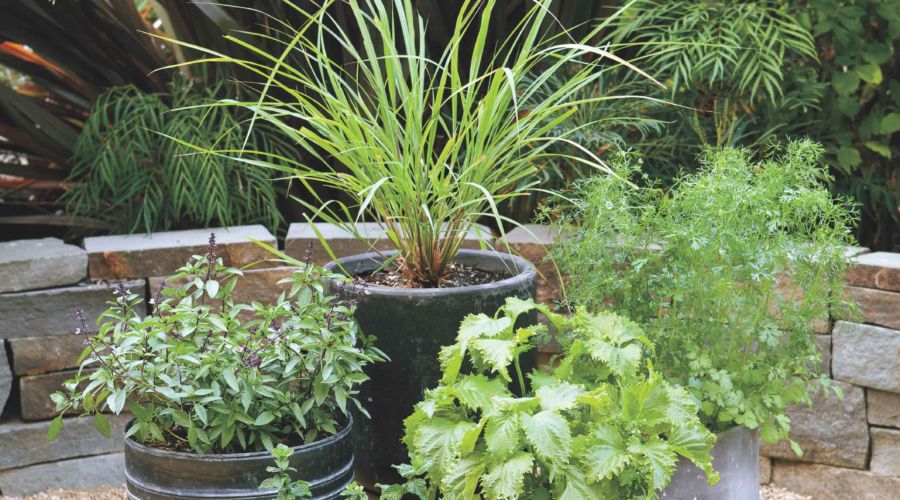
How to Grow the Right Edible Garden for Every Space
Even if you don’t have a quarter acre of arable soil and unfettered sunshine, you can grow a few beautiful things to eat. No matter what you’re working with, there’s a kitchen garden right for you.

Small

Containers are your friend. Get the biggest planter you can accommodate and install garlic chives, shiso, and a Korean pepper for summer; in the fall, rotate it out to cool-season gai lan or gai choy, cilantro, and bunching onions or purple kohlrabi, salad burnet, and chervil. Though they’re heavy, glazed ceramic containers hit the sweet spot between functional and decorative. (Terra cotta is porous so plants will need to be watered frequently. Plastic holds water well, but can look cheap.)
Medium

With a raised bed or two, your options are wide open. In addition to everything listed in our Taxonomy, you can add other nightshades like Russian heirloom tomatoes, ground cherries (Physalis peruviana), tomatillos, and Asian eggplants. Grow goji berry, luffa gourd, and long bean on trellises; plant marigolds and celosia along the edges for garnishing. (Marigold petals are known as “Georgian saffron” and will help keep pests away from the garden; celosia is used in West Africa.) Let shade-tolerant herbs like chervil grow wild along the edges.
Large

With a large garden, the sky’s the limit. Having three or more raised beds means you can rotate your crops every year to keep your soil (and plants) healthy, but it also means you have more room to experiment. Grow the plants listed for medium gardens, and add lovage (Levisticum officinale), rhubarb (Rheum rhabarbarum), and horseradish (Armoracia rusticana) along the perimeter of the garden; these boisterous plants take up a lot of space, but they’re worth it—besides providing unique flavor for the cook, their bold shapes will add visual interest in the garden.
